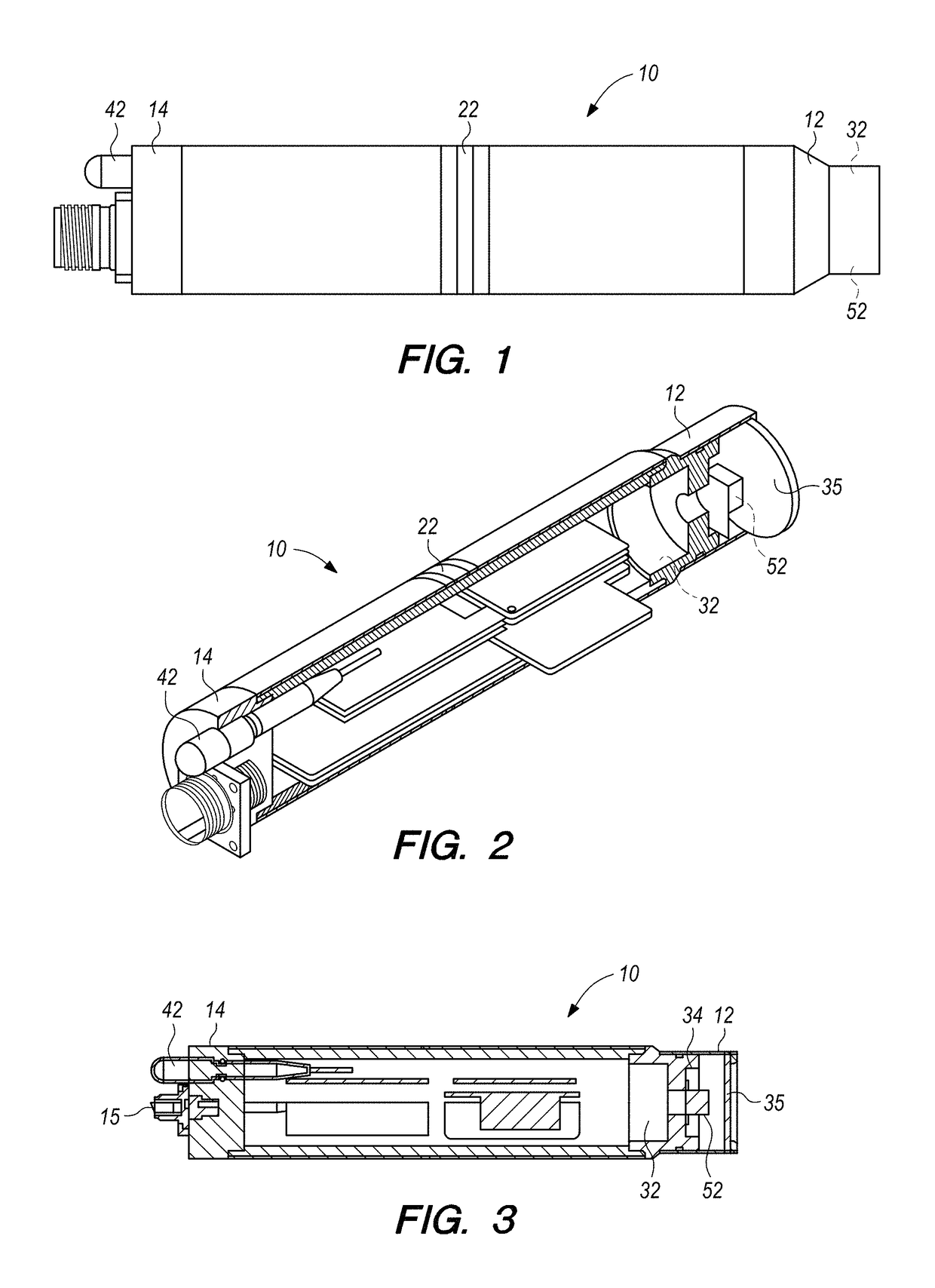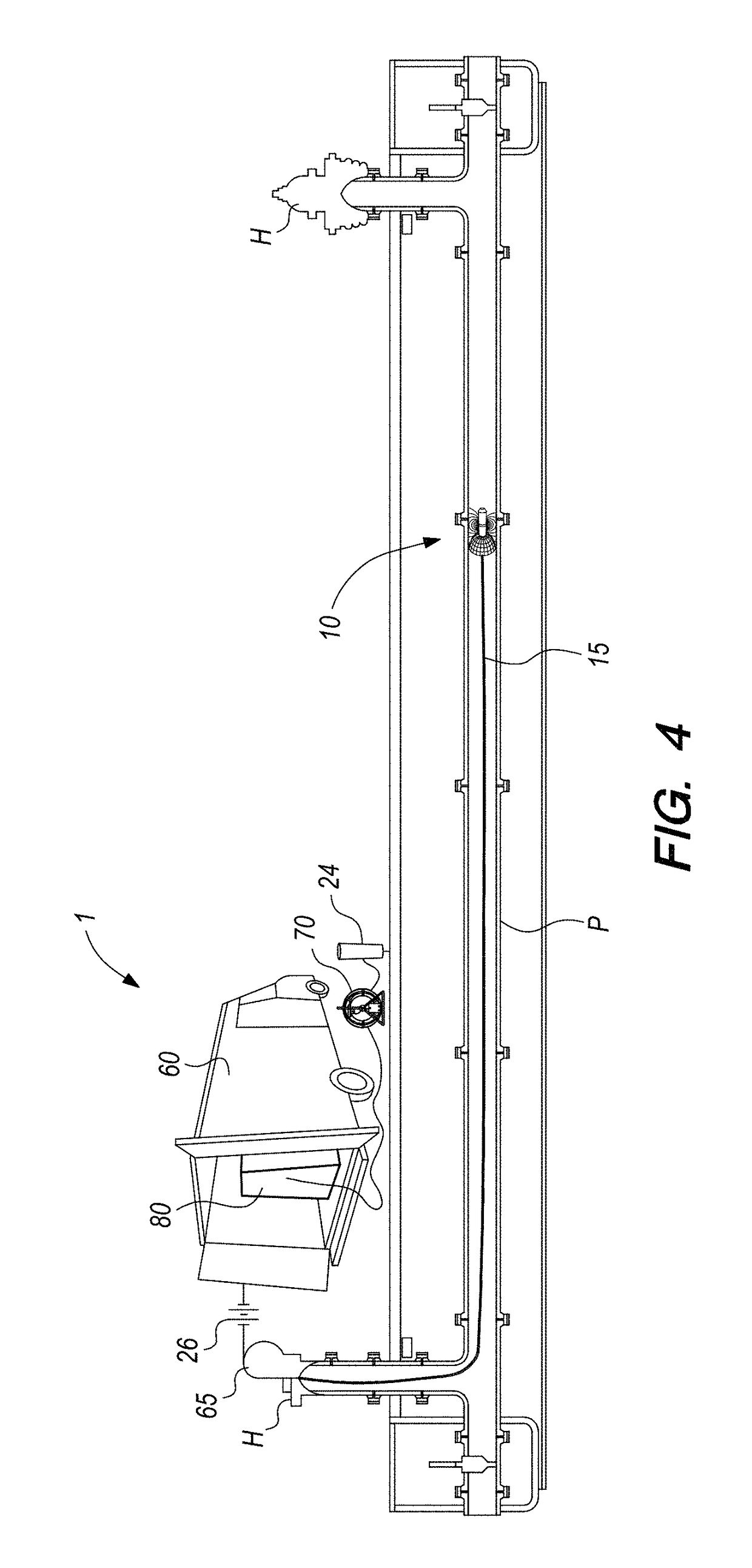Multi-sensor inspection for identification of pressurized pipe defects that leak
a technology of pressure pipe and multi-sensor inspection, which is applied in the direction of fluid loss/gain rate measurement, fluid tightness measurement, instruments, etc., can solve the problems of increasing the cost of operating the pipe, causing potential hazards, and difficult inspection of pressure water delivery pipeline systems and other underground pressurized and unpressurized fluid transportation pipes. to achieve the effect of accurate identification of defects and severity
- Summary
- Abstract
- Description
- Claims
- Application Information
AI Technical Summary
Benefits of technology
Problems solved by technology
Method used
Image
Examples
Embodiment Construction
[0046]Referring to the drawings, wherein like reference numerals represent like parts throughout the various drawing figures. The system 1 is consistent with a prior art system described in ASTM (ASTM International, formerly known as “American Society for Testing and Materials”) Standard F2550-13 described as “Standard Practice for Locating Leaks in Sewer Pipes By Measuring The Variation of Electric Current Flow Through the Pipe Wall.” This system 1 can be utilized in underground pressurized (or unpressurized) pipes P such as water or sewer by passing a probe 10 through the pipe P, such as between adjacent fire hydrants H, valves, or other appurtenances to detect defects in the pipe P wall. The system 1 incorporates a launch tube assembly, a reel assembly, and data handling and typically also processing with an on-site PC-based processor, as well as a remote processing location, for efficient and accurate data handling and overall database construction of pipe condition data.
[0047]M...
PUM
 Login to View More
Login to View More Abstract
Description
Claims
Application Information
 Login to View More
Login to View More - R&D
- Intellectual Property
- Life Sciences
- Materials
- Tech Scout
- Unparalleled Data Quality
- Higher Quality Content
- 60% Fewer Hallucinations
Browse by: Latest US Patents, China's latest patents, Technical Efficacy Thesaurus, Application Domain, Technology Topic, Popular Technical Reports.
© 2025 PatSnap. All rights reserved.Legal|Privacy policy|Modern Slavery Act Transparency Statement|Sitemap|About US| Contact US: help@patsnap.com



